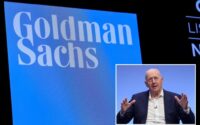US wholesale inflation surprisingly strong — biggest jump in 14 months
US wholesale inflation rose a hotter-than-expected 0.7% in August — the biggest advance in 14 months.
The Producer Price Index — a measure of what prices domestic producers receive for their output — experienced a seasonally-adjusted monthly advance well above Dow Jones’ 0.4% estimate.
The August increase is the largest increase US producers have seen since June 2022, when the rate peaked at 0.9%.
The PPI increased 1.6% on a year-over-year basis, the Bureau of Labor Statistics reported on Thursday, giving the Federal Reserve fresh data to mull over in its upcoming decision of whether to hike interest rates further.
“The August rise is mostly attributable to prices for final demand energy, which surged 10.5%,” as well as prices for gasoline, which jumped a staggering 20%, the Bureau of Labor Statistics said.
The PPI report echoes Wednesday’s surprisingly high Consumer Price Index, which revealed that Americans paid 3.7% more for everyday goods and services in August than they did in 2022 and blamed the advance on surging gas prices.

Earlier this month, oil prices hit a 10-month high after Saudi Arabia and Russia agreed Tuesday to extend their voluntary oil production cuts through the end of this year, trimming 1.3 million barrels of crude out of the global market and boosting energy prices.
The countries’ latest move is just the latest in a string of slashed oil production, which is already causing pain at the pump.
The national average for one gallon of gas currently sits at $3.85, according to AAA figures — two cents less than a month ago and four cents less than a year ago as oil prices hit a 10-month high.
Core PPI — which excludes volatile food, energy, and trade demand — rose 0.3% in August for the second consecutive month, slightly above the Dow’s 0.2% estimate.
Most of the core PPI’s increase was traced to a 1.1% increase in costs for residential real estate services, while the indexes for truck transportation, residential home loans, and machinery wholesaling also moved higher.
Services prices increased 0.2%.

The PPI report comes just one day after the closely-watched core CPI also showed a 0.3% increase from a month ago.
The advance was stiffer than expected, spurred by stubbornly high shelter costs that, despite a cooling housing market, are being affected by sky-high mortgage rates.
Last month, the average benchmark 3-year home loan climbed to 7.23%, according to mortgage buyer Freddie Mac — the highest level since 2001, when it averaged 7.24%.
As mortgage rates have been climbing along with the 10-year Treasury yield, many homeowners in major US cities are having to sell their homes at a loss.
In densely-populated, inflation-ridden metros like San Francisco and New York, homeowners can expect losses to average $100,000, according to real estate brokerage firm Redfin.
Economists are predicting that the slight increase in core inflation over the past three months sets up the Fed to hold interest rates steady next week following the central bankers’ highly-anticipated two-day meeting set for Sept. 19 and 20.

Whether Fed officials will raise its benchmark federal funds rate beyond its current range — between 5.25% and 5.5% — in November and December still remains up in the air.
At the Fed’s closely-watched meeting in Jackson Hole, Wyo., last month, Fed Chair Jerome Powell was hawkish in his tone on the still-stubbornly high inflation, though he remained vague on future rate hikes.
“We are navigating by the stars in cloudy skies,” Powell said from Jackson Lake Lodge, noting that Fed officials “will keep at it until the job is done” and the Fed’s 2% inflation goal is reached.
The central bank has worked to bring down stubbornly high inflation by hiking rates another 25 basis points to a 22-year high last month in hopes of an economic slowdown.


